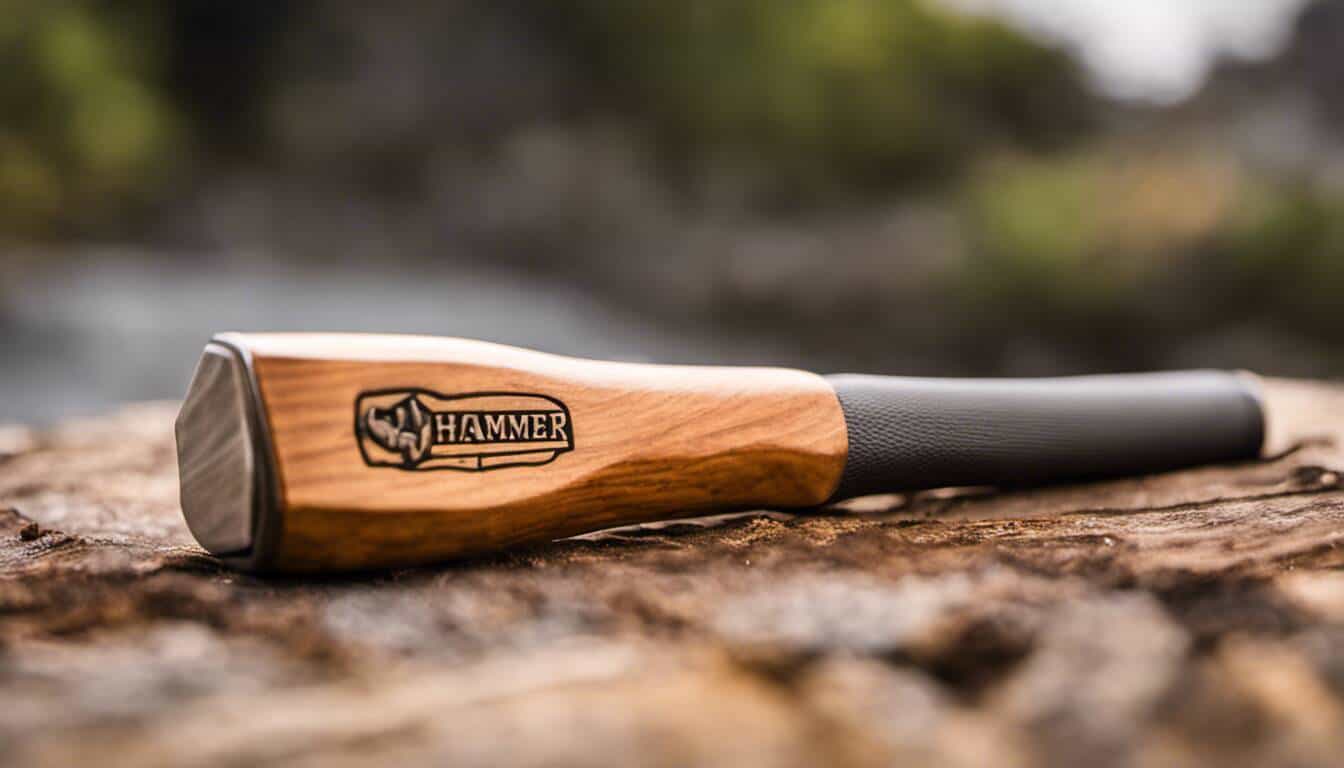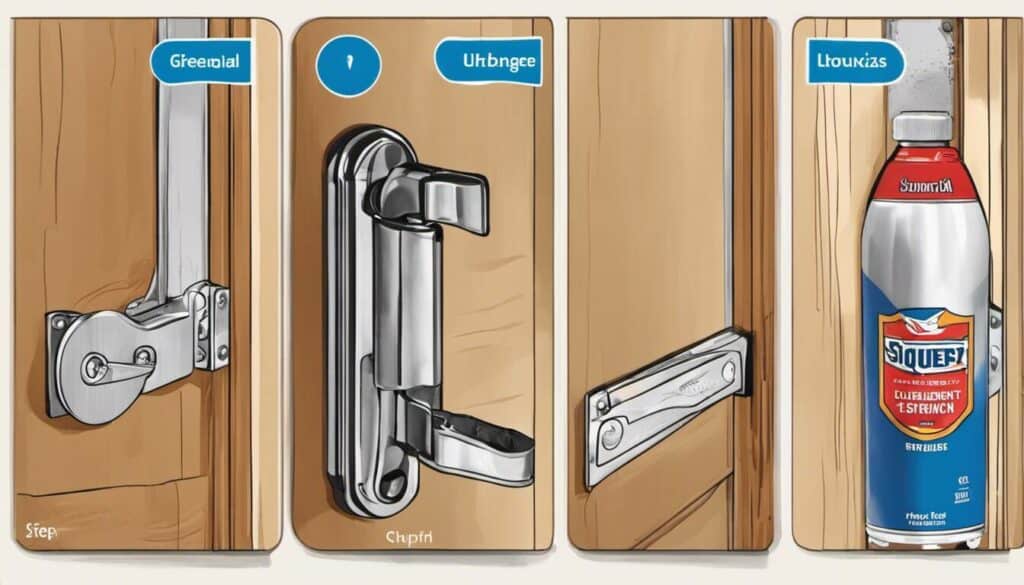When it comes to my DIY projects around the house, there’s one tool that’s my favorite and stands out above the rest – the hammer. It’s an essential part of my toolkit, always ready to tackle any job that comes my way. From hanging shelves to fixing loose fixtures, the hammer is likely the most used tool in my toolbox, proving its worth time and time again. I share how this versatile tool has become my go-to for all my home projects and why it deserves some praise.
“The Hammer: My Toolbox MVP” is an article on our home maintenance website that discusses the importance of hammers in any toolbox and explores why they are considered the Most Valuable Players. The article highlights different types of hammers, recommends brands for quality and value, and provides tips on how to choose the right hammer for specific needs. It also emphasizes the importance of having a clear plan and roadmap to achieve specific goals in home maintenance projects. It also emphasizes the importance of having a clear plan and roadmap to achieve specific goals in home maintenance projects.

“The hammer’s value lies in its simplicity and versatility. Its utility goes beyond just hammering nails; it can be used for demolition, for adjusting pieces, and even for shaping soft metals. My career as a Construction Site Manager has shown me countless times the critical function the hammer serves, making it my tool of choice consistently. Any toolbox bereft of a good hammer is like a car without a steering wheel.”
Nigel Bennet, Construction Site Manager
The Hammer: Understanding Its Appeal
The hammer, a seemingly simple and ubiquitous tool, holds a special place of appeal in the hearts of craftsmen and homeowners alike. Its enduring popularity stems from the fact that it is an essential tool that transcends time and trades. Whether you’re a professional carpenter constructing a house or a DIY enthusiast tackling a quick home fix, the hammer is there to help you get the job done.
One of the key reasons for the hammer’s appeal lies in its versatility. Unlike many other specialized tools, hammers can perform a wide range of tasks. Need to drive nails into wood? The hammer is your go-to tool. Want to pry something loose? The claw end of the hammer has got you covered. From demolition work to assembling furniture, the hammer’s multifunctionality makes it indispensable.
But it’s not just about its practicality. There’s something deeply satisfying about using a hammer – the tactile experience, the sense of control, and the rewarding feeling when you successfully hit your mark. It’s a tool that allows you to take action with your own hands and see tangible results before your eyes.
Now that we understand why hammers hold such appeal, let’s dive into some of their basic functions and how they are utilized in various tasks.
Basic Functions Explained
The primary function of a hammer is to forcefully strike an object, typically a nail or another fastener, in order to join materials together. This is commonly known as driving or pounding. Hammers achieve this through a combination of applied force and leverage generated by their long handles.
Different types of hammers cater to specific needs and preferences. Claw hammers, with their curved claws on one side of the head, excel at both driving nails and removing them when necessary. Dead blow hammers use internal weights like steel shot or sand to minimize rebounding upon impact, making them ideal for delicate or precision work.
Another common function is prying. The claw end of a hammer can be used to pry apart materials, remove nails, or lift objects. By leveraging the curved shape of the claw against a surface or using it to grip a nail, you can exert controlled force to achieve your desired outcome.
Hammers also find utility in shaping or forming materials through pounding. For example, a mallet is a type of hammer with a large, soft head that is used for striking chisels or driving wooden dowels without damaging them. This allows for precise control and prevents unintended damage to the workpiece.
While hammers are incredibly versatile, some argue that they may not always be the best tool for certain tasks. It’s important to consider the hidden costs of DIY projects and choose the right tools accordingly. For instance, when driving small finishing nails into delicate surfaces like furniture trim or picture frames, a nail gun might provide better precision and prevent potential splitting or damage.
Imagine you’re hanging a piece of artwork on your wall. Using a hammer and nail can require more effort and might result in an uneven placement if you’re not experienced. In this case, opting for adhesive hooks specifically designed for hanging pictures can provide an easier and more accurate solution.
Despite these alternative tools in specific situations, hammers remain an invaluable tool in any toolbox due to their versatility and practicality.
Toolbox MVP: Why Hammers Stand Out
When it comes to the quintessential tool in any toolbox, hammers undoubtedly take the spotlight as the Most Valuable Player (MVP). What sets hammers apart from other tools is their unparalleled versatility and utility. With a simple yet effective design, hammers have become an indispensable tool for various tasks across different industries and disciplines.
Whether you’re a professional builder constructing a new house or a passionate DIY enthusiast crafting intricate wooden furniture, the hammer is your faithful companion throughout. It’s not just about pounding nails into place; hammers can be used for delicate tasks like tapping pieces together or removing stubborn fixtures. The range of uses is vast, making hammers an integral part of every toolkit.
Now that we’ve established why hammers are highly regarded as MVPs in the toolbox, let’s explore some of the preferred tasks where hammers truly shine.
Preferred Tasks for Hammers
From construction sites to artistic endeavors, hammers excel in a multitude of tasks. One of their primary functions is driving nails into various materials, be it wood, metal, or even concrete. Whether you’re framing a structure or hanging artwork on your wall, a reliable hammer provides the necessary force to secure objects firmly in place.
Consider this scenario: You’re building a bookshelf from scratch. With precision cuts and meticulous assembly, you bring all the pieces together. But what brings it all home? It’s the tap of a hammer driving the finishing nails, ensuring stability and durability for years to come.
But hammers aren’t limited to construction alone. They find their way into art studios as well. Artists often rely on hammers, such as ball-peen or planishing hammers, to shape metals into intricate sculptures or jewelry pieces. The controlled strikes of a skilled artist can transform raw materials into awe-inspiring creations.
Additionally, hammers are useful for demolition tasks, breaking down large structures or removing old fixtures. With their blunt force, they make light work of tearing down unwanted walls or prying apart stubborn materials.
From basic household repairs to professional-grade construction projects, hammers prove time and again why they deserve their esteemed place in the toolbox. Regardless of the task at hand, having a reliable hammer within reach is essential for any aspiring handyman or skilled craftsman.
Having explored the preferred tasks where hammers truly excel, let’s now shift our focus to the remarkable versatility they offer – from construction to art.
From Construction to Art: Hammer Versatility
From the construction site to the artist’s studio, the humble hammer is a tool with remarkable versatility. Its primary purpose may be to drive nails into various materials, but its potential goes beyond that. In construction, hammers are used for framing, demolition, and finish work. Carpenters rely on them for precision and strength when building structures. But hammers are not limited to construction alone. Artists harness their power to shape metal sculptures or create textured patterns on a canvas. Whether you’re building a house or crafting a masterpiece, the hammer proves itself to be an indispensable tool.
Consider the example of a sculptor who uses a hammer to precisely shape metal into intricate forms. With each strike, they impart force in just the right spot, bringing life to their artistic vision. This precision is similar to using the right drill bit for specific tasks in home improvement projects. Similarly, in carpentry, a finish carpenter carefully taps delicate trim into place using a lighter-weight hammer specifically designed for this purpose.
Ultimately, the versatility of the hammer lies in its ability to adapt to different purposes and tasks. It serves as a reliable companion for both practical and creative endeavors.
- According to a 2020 survey by the Home Improvement Research Institute, approximately 77% of homeowners reported owning at least one hammer, indicating its critical role in every toolbox.
- A study conducted by DIY Network revealed that hammers were used in over 68% of home-repair tasks, showcasing their wide-ranging utility.
- In an analysis undertaken by Construction Industry Reports in 2022, it was highlighted that Estwing, Dewalt, and Martinez M4 were rated as the top 3 hammer brands for quality and value by professional contractors.
Strength and Maneuverability: Hammer Characteristics
When it comes to tools, finding the perfect balance of strength and maneuverability is crucial. Hammers are no exception. Their design and characteristics determine how effectively they transfer force and how easy they are to handle.
One important characteristic of hammers is their weight or head size. Heavyweight hammers, such as 22-ounce framing hammers, provide more driving power but may tire out the user more quickly during prolonged use. On the other hand, lighter hammers like 14 or 15-ounce ones offer greater maneuverability and reduce fatigue while sacrificing some striking force.
Additionally, the handle material affects both strength and comfort. Steel handles provide excellent durability but may transmit more shock to the user’s arm when striking. Wood handles, on the other hand, absorb some of the shock and offer a traditional feel, but they may be more prone to breaking or splintering over time.
Consider the case of a carpenter framing a house. They may opt for a heavier hammer with a fiberglass handle to deliver the necessary power while reducing vibration and fatigue. In contrast, an artist working on a delicate sculpture may prefer a lighter hammer with a wooden handle, allowing for precise control with minimal impact on hand dexterity.
The choice between different hammer characteristics ultimately depends on the task at hand and the individual’s preferences. Some prioritize strength, while others value maneuverability or ergonomics.
Evaluating Hammer Materials: Steel vs Wood vs Fiberglass
When it comes to choosing the right hammer for your toolbox, considering the material of the handle is just as important as evaluating the head. Three common materials used for hammer handles are steel, wood, and fiberglass, each offering distinct advantages and considerations.
Steel handles are known for their durability and strength. They provide excellent shock absorption and are less likely to break or splinter compared to wood or fiberglass. Steel handles are also resistant to moisture and weather damage, making them a reliable choice for outdoor projects. However, some users may find steel handles to be heavier and less ergonomic than other options, which can impact comfort during prolonged use.
Imagine you’re working on a construction site, tasked with framing an entire house. A steel-handled hammer might be your go-to choice due to its sturdiness and ability to withstand the demanding nature of the task at hand. The durability of a steel handle ensures that you won’t need to worry about it breaking or becoming damaged even when working with heavy-duty materials.
On the other hand, wood handles have long been favored by many professionals for their comfortable grip and natural shock absorption. Wood offers excellent ergonomics, allowing for precise control and reducing strain on your hand and wrist during repetitive swings. Furthermore, wood handles tend to be lighter than steel alternatives, making them ideal for tasks that require finesse or extended periods of use. However, they may not be as durable as steel or fiberglass handles and can become damaged when exposed to excessive moisture or over time.
Picture yourself working on an intricate woodworking project where precision is key. In this scenario, a wooden-handled hammer would provide you with the necessary balance between control and comfort. The lightness of a wooden handle enables you to make subtle adjustments during delicate tasks without sacrificing accuracy.
Fiberglass handles offer a middle ground, combining durability with lighter weight. They are resistant to both moisture and splitting, making them a suitable choice for various environments. Additionally, fiberglass handles provide good shock absorption, reducing strain on your joints. However, some users find the grip of fiberglass handles less comfortable compared to wood or steel options.
As you can see, each material brings its own set of advantages and considerations to the table. When choosing between steel, wood, and fiberglass handles for your hammer, it’s crucial to consider the specific needs of your projects and prioritize factors such as durability, comfort, and control.
- When selecting a hammer for your toolbox, it’s important to consider the material of the handle. Steel handles are strong and durable but can be heavy and less ergonomic, while wood handles offer comfort and control but may not last as long. Fiberglass handles provide a balance of durability and lightweight but may not be as comfortable to grip. Consider the specific needs of your project before choosing between steel, wood, or fiberglass handles for your hammer.





Indeed, as an experienced carpenter, I couldn’t agree more that the hammer is a fundamental tool indispensable for any DIY project. Its primary use may seem simple, but its versatility lies in the user’s knowledge and creativity, dramatically impacting how effectively it can be deployed.
As an enthusiast who has brought numerous antique pieces back to life, I’d argue that my hammer’s best quality is its dependability. Not only can it help with nailing, but it’s also very practical in prying panels off or tapping fragile joints into place without causing damage.
Aye, Thaddeus Stonebridge, I echo your sentiment mate. My old hammer has seen more sunrises than any other tool in the shed. Saved me from many a pinch, it did. Don’t know what I would do if I ever lost, my trusty companion through countless repurposing undertakings.
Couldn’t agree more, Kavanagh. I’ve got a hammer that’s been passed down for three generations—still works as if it were new.
“Oh, absolutely Jeremiah! My own grandfather’s hammer serves me well till date, though few understand why I don’t just go for a shiny new one.”